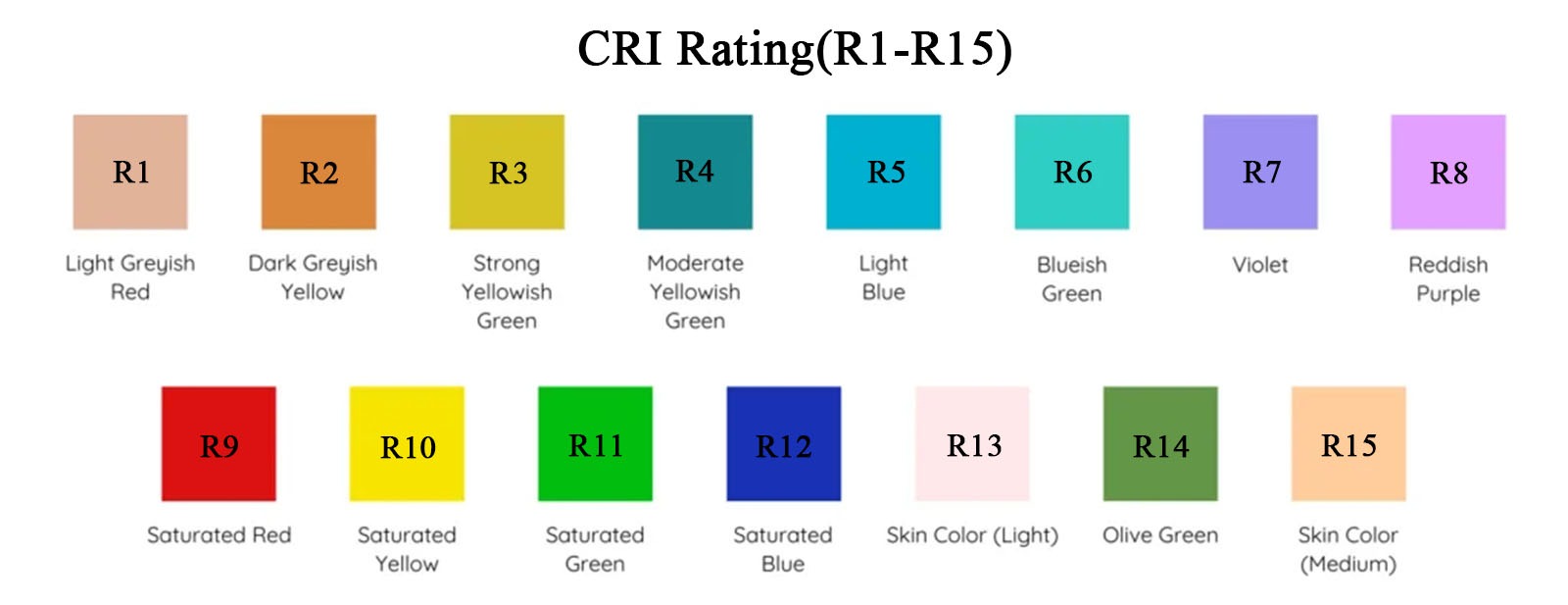Are you tired of lighting that leaves your space feeling dull or makes colors look off? Poor lighting with a low CRI can distort colors, ruin your ambiance, and even harm your productivity. The good news? Understanding CRI helps you choose the right lighting for your space.
CRI, or Color Rendering Index, is a scale from 0 to 100 that measures how well a light source shows the true colors of objects compared to natural light. A CRI of 100 represents natural daylight—perfect color accuracy—while lower numbers mean colors may appear unnatural. High CRI lighting is crucial for places where true-to-life color is a must, like art studios, retail stores, or even your home.
Stick with me—high CRI lighting helps create inviting, functional spaces that feel just right. Here’s how.
Table of Contents
What is the Color Rendering Index (CRI)?
CRI tells you how well a light source shows colors accurately. It compares how the light makes things look against natural daylight. A CRI of 90 or higher1 is excellent and perfect for environments where color clarity matters.
- CRI of 80 or higher: Good for most everyday spaces.
- CRI of 90 or higher: Ideal for areas needing precise color matching, like art galleries or medical offices.

Color Rendering Index
How is CRI Measured?
CRI is measured using eight standard reference colors. Lighting labs conduct these tests to give a reliable rating of a light source’s color accuracy. A spectrophotometer, a high-tech instrument, checks how the light impacts the colors. The device calculates how much light is absorbed after passing through the sample, giving exact data on the light’s color effects.
For each color, the light’s performance is compared to daylight. The difference is measured as a percentage. After testing all eight colors, an average is calculated for the overall CRI. A higher CRI means better color rendering.
One thing to note: traditional CRI doesn’t always show how well red tones are rendered. So, a light source with poor red rendering can still get a good CRI score. That’s why a newer method has been introduced to give a more complete picture.
The limitations of the eight-color CRI metric are widely recognized. To address this, an extended CRI method has been introduced in recent years, utilizing 15 reference colors for a more comprehensive evaluation.

CRI Rating
TM-30-15: The New Standard for Color Rendering
The new standard, TM-30-152, is slowly replacing the older CRI system. Developed by the Illuminating Engineering Society (IES), TM-30-15 uses 99 reference colors to provide a more accurate and detailed rating.
TM-30-15 also includes metrics like the Gamut Index, which measures how saturated the colors are, and the Color Fidelity Index, which shows how well the light matches a reference color. This new system gives a better understanding of a light’s true color performance.

TM-30-15 Color Rendering
Common CRI Values and Which is Right for You
CRI values go from 0 to 100. Here’s what the values mean:
- 70: Good for warehouses or basic lighting.
- 80-89: Great for offices and general use—balances cost and performance.
- 90+: Perfect for spaces like galleries or design studios that need accurate, vibrant colors.
What CRI you choose depends on the purpose. For everyday areas, a CRI of 70 works. For spaces where appearance matters, go for 90 or more.
CRI in Real-Life Use
CRI isn’t just a number—it impacts how your space feels. Lights with high CRI make colors pop and create a vibrant, natural look. Low CRI lights, on the other hand, make everything seem flat and washed out.
What’s a Good CRI for LED Lights?
For most LED lighting setups, a CRI of 80 or above is recommended. High-quality LEDs often have CRI ratings of 90 or more, which ensures that the lighting works well in your home, office, or warehouse.

Is CRI 80 Good?
A CRI of 80 is solid for most spaces, offering a good balance of color accuracy and energy efficiency. However, for spaces where color really matters—like art rooms or luxury settings—consider going for a CRI of 90 or higher.
What CRI is Best for Living Rooms?
For living rooms, go with a CRI of 80 or above. This range gives off a cozy, natural feel. But if you want colors to really pop—think artwork, furniture, or décor—choose a CRI of 90 or higher1 for a richer look.
In Conclusion
To sum up, CRI plays a major role in how lighting affects your space. Whether you’re showing off art or creating a functional work environment, the right CRI makes all the difference. So next time you’re picking out lighting, consider CRI—it could transform your space!
Interested in how high-CRI LEDs can elevate your space? Reach out today to discuss how we can help with your lighting needs!



